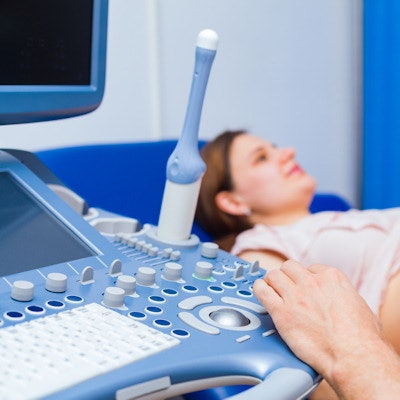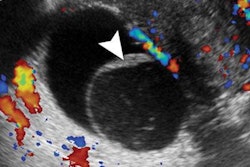
Transvaginal ultrasound keeps pace with MRI when it comes to accurately assessing myometrial invasion in women with endometrial cancer, according to a study published February 11 in Radiology and Oncology.
Researchers led by Dr. Anis Cerovac from Tešanj General Hospital in Bosnia and Herzegovina wrote that their findings indicate that transvaginal ultrasound can play a part in being the first-line imaging technique for assessing myometrial invasion in endometrial cancer patients due to the higher cost and lesser availability of MRI.
"Although the definitive staging of endometrial cancer is based on histopathology, an accurate preoperative assessment of myometrial invasion by transvaginal ultrasound and/or MRI provides the opportunity for surgical planning to provide an adequate type of surgery, the need of a multidisciplinary team, time management in the operating room, and avoid morbidity associated with unnecessary lymphadenectomy," Cerovac and colleagues wrote.
While endometrial cancer is the most common malignancy in the female genital tract and is increasing in incidence, most cases are diagnosed in the first stage, when prognosis is good because uterine bleeding occurs at that stage.
Myometrial invasion is one of the most important prognostic factors that correlates with the risk of metastasis to pelvic lymph nodes. Assessing depth determines which therapeutic approach will work best, as well as determining whether women should be referred for hysterectomy with bilateral adnexectomy or pelvic lymphadenectomy.
Previous research suggests that MRI yields the best results in evaluating myometrial invasion depth. However, transvaginal ultrasound has been looked at as an alternative method, with researchers touting its cost-effectiveness and availability.
Cerovac and colleagues wanted to compare the diagnostic accuracy of transvaginal ultrasound with that of MRI when assessing myometrial invasion in patients. They used definitive histopathological diagnosis as a reference method for the single-center study.
"To the best of our knowledge this is the first study that compared two objective transvaginal ultrasound measurements techniques with MRI on the same set of patients," the researchers wrote.
The two ultrasound techniques include Gordon's technique, which uses the ratio between the distance of the maximum tumor invasion and total width of myometrium, and Karlsson's technique, which looks at the tumor and uterine anteroposterior diameter ratio.
The study authors looked at data from 60 women with histopathologic-proven endometrial cancer who presented between 2019 and 2021. The women were divided into two groups after surgical and histopathological assessment of myometrial invasion, superficial (less than 50%) and deep (more than 50%).
The team found that the concordance coefficient between both transvaginal ultrasound methods, MRI, and histopathology was statistically significant (p < 0.001).
| Transvaginal ultrasound vs. MRI in assessing myometrial invasion depth in endometrial cancer patients | |||
| MRI | Transvaginal ultrasound (Gordon's method) | Transvaginal ultrasound (Karlsson's method) | |
| Positive predictive value | 83% | 83% | 82% |
| Negative predictive value | 97% | 83% | 79% |
| Sensitivity | 97% | 77% | 69% |
| Specificity | 85% | 88% | 88% |
| Accuracy | 90% | 83% | 80% |
The researchers wrote that while MRI was superior in performance despite the lack of statistical significance, situations in which MRI cannot be performed should be considered. These include the presence of metal foreign bodies, pathologic obesity, contrast allergies, and claustrophobia.
The team also called for multicentric, prospective studies with standardized protocols to determine which techniques have the highest reproducibility, and how radiologist experience plays into their respective performance.
"In addition, studies evaluating interobserver agreement as well as the impact of transvaginal ultrasound training would be of great interest," the authors wrote.



















